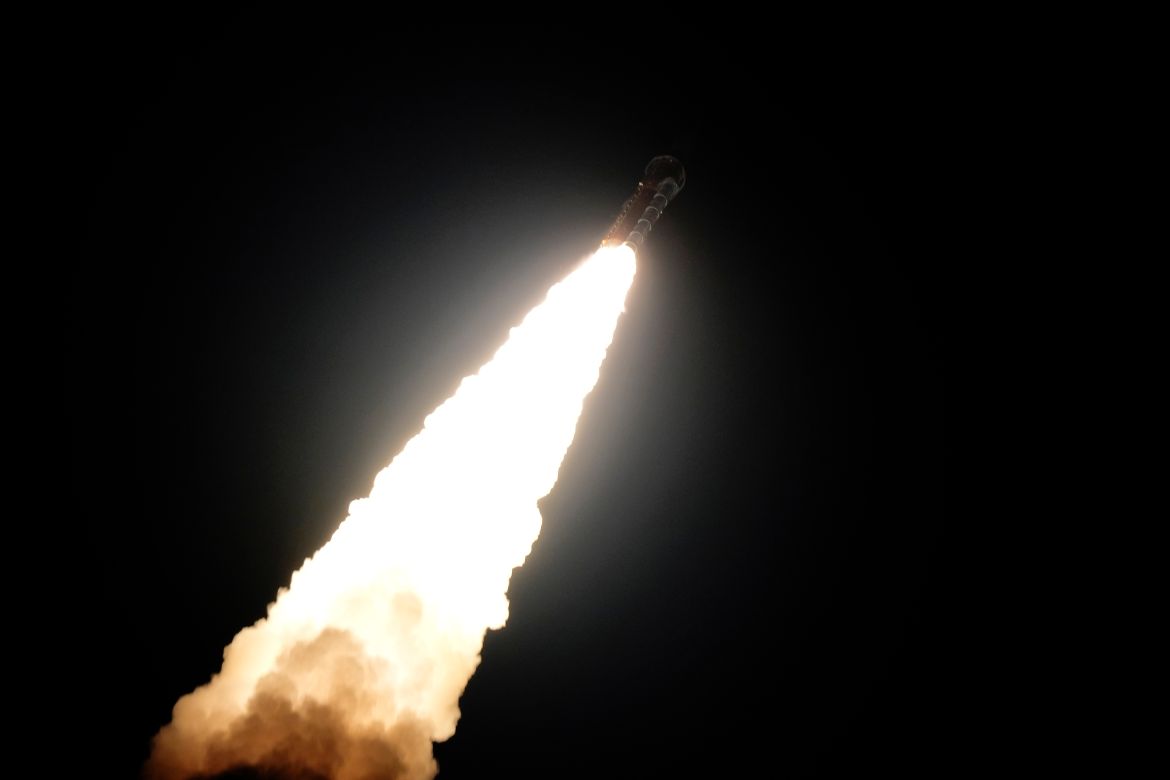In Pictures
NASA’s new moon rocket lifts off, 50 years after Apollo
The liftoff marks the start of NASA’s Artemis lunar-exploration programme.

NASA’s new moon rocket blasted off on its debut flight with three test dummies on board early on Wednesday, bringing the United States a big step closer to putting astronauts back on the moon for the first time since the end of the Apollo programme 50 years ago.
If all goes well during the three-week flight, the rocket will propel an empty crew capsule into a wide orbit around the moon, and then the capsule will return to Earth with a splashdown in the Pacific in December.
After years of delays and billions in cost overruns, the Space Launch System rocket thundered skyward, rising from Kennedy Space Center on 4 million kilograms (8.8 million pounds) of thrust and hitting 160km/h (100 mph) within seconds. The Orion capsule was perched on top, ready to bust out of Earth orbit towards the moon not quite two hours into the flight.
The moonshot follows nearly three months of vexing fuel leaks that kept the rocket bouncing between its hangar and the pad. Forced back indoors by Hurricane Ian at the end of September, the rocket remained outside as Nicole swept through last week with gusts of more than 130km/h (80 mph). Although the wind peeled away a 3-metre (10-foot) strip of caulking high up near the capsule, managers gave the green light for the launch.
The liftoff marked the start of NASA’s Artemis lunar exploration programme, named after Apollo’s mythological twin sister. The space agency is aiming to send four astronauts around the moon on the next flight, in 2024, and land humans there as early as 2025.
The 98-metre (322-foot) SLS is the most powerful rocket ever built by NASA, with more thrust than either the space shuttle or the mighty Saturn V that carried men to the moon.
Orion should reach the moon by Monday, more than 370,000km (230,000 miles) from Earth. After coming within 130km (80 miles) of the moon, the capsule will enter a far-flung orbit stretching about 64,000km (40,000 miles) beyond.
The $4.1bn test flight is expected to last 25 days, roughly the same as when crews will be on board. The space agency intends to push the spacecraft to its limits and uncover any problems before astronauts strap in. The mannequins – NASA calls them moonequins – are fitted with sensors to measure such things as vibration, acceleration and cosmic radiation.
The rocket was supposed to have made its dry run by 2017. Government watchdogs estimate NASA will have spent $93bn on the project by 2025.
Ultimately, NASA hopes to establish a base on the moon and send astronauts to Mars by the late 2030s or early 2040s.









